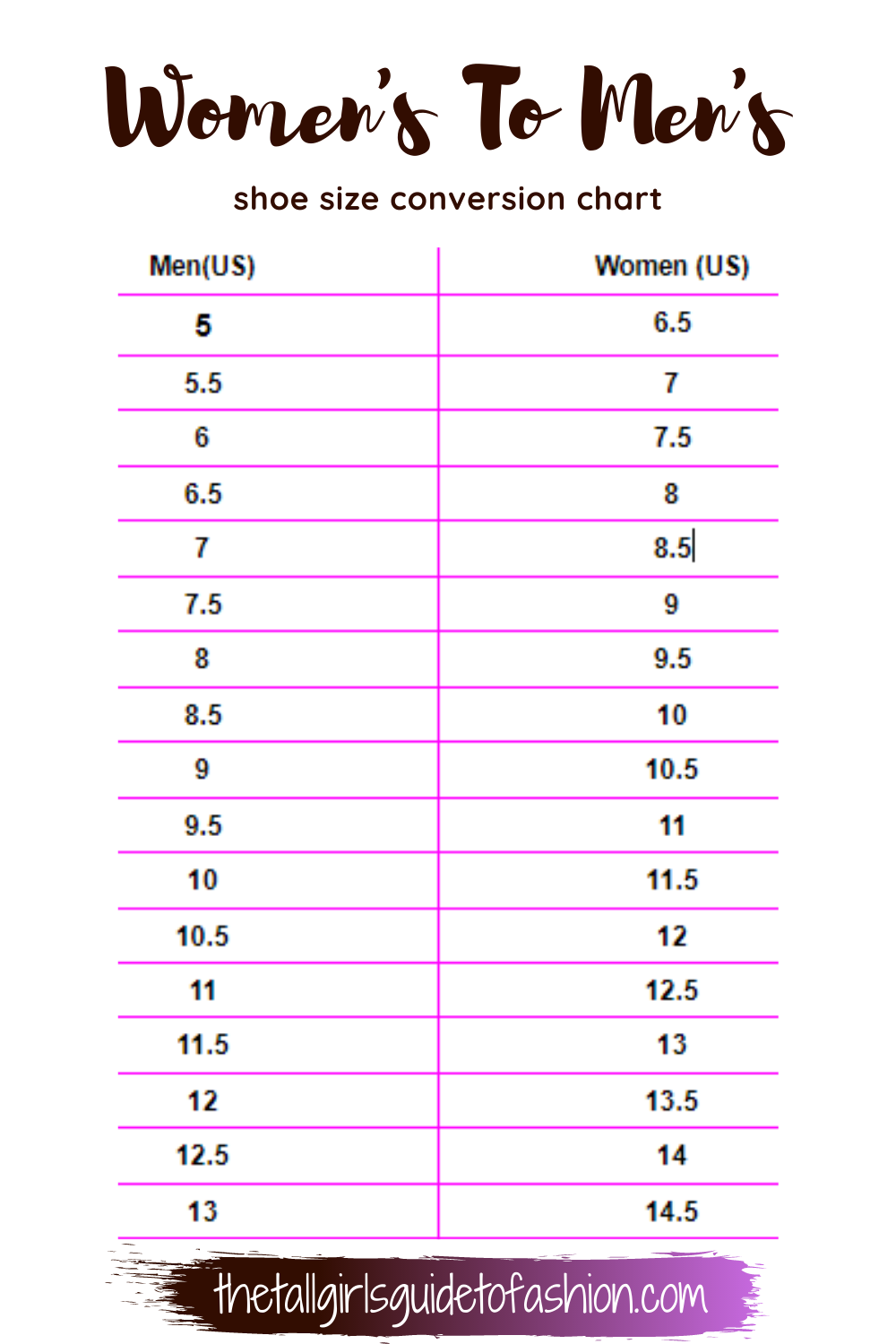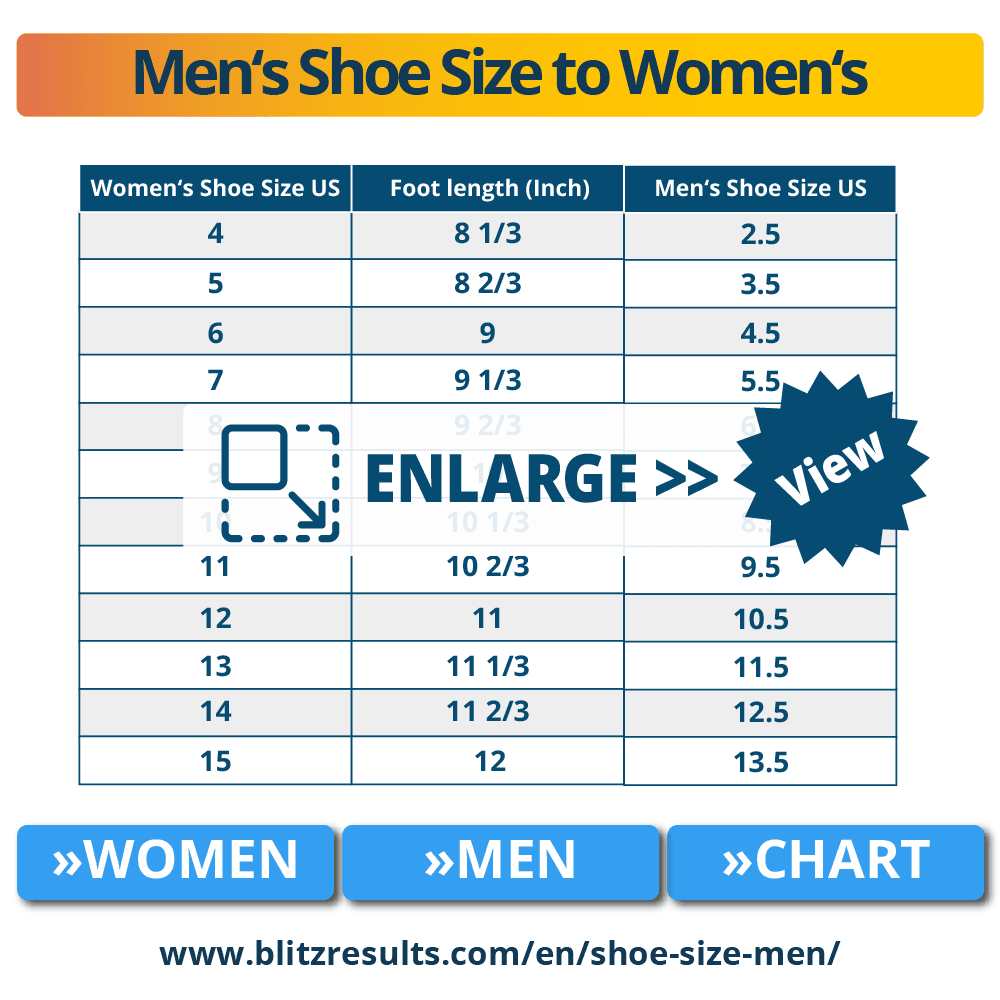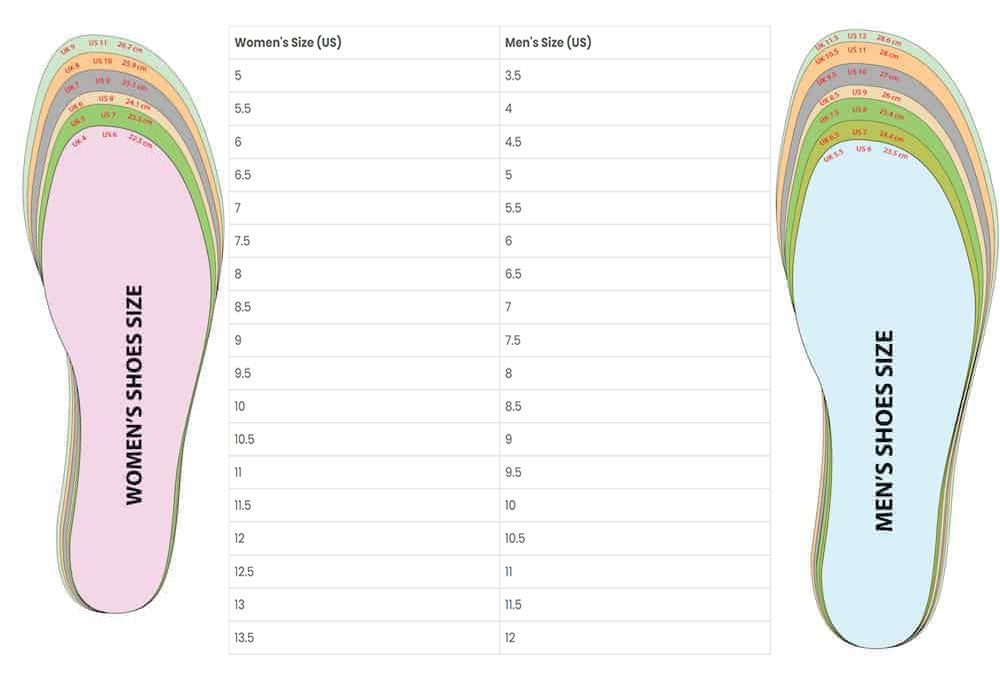In a world where fashion knows no gender boundaries, the understanding of women’s to men’s shoe size conversions is becoming increasingly crucial. Whether you’re shopping for a partner, trying on shoes for yourself, or exploring the latest trends in unisex footwear, knowing how to translate sizes can make all the difference.
Why Size Conversion Matters
With the growing acceptance of gender fluidity in fashion and footwear, the ability to convert women’s shoe sizes to men’s is more relevant than ever. Many people find themselves drawn to styles traditionally marketed towards the opposite gender, leading to the need for an easy way to navigate size differences. This article serves as your comprehensive guide to women’s to men’s shoe size conversion, exploring methods, tips, and cultural insights to enrich your experience.
Understanding Shoe Size Systems
Shoe sizing systems can vary significantly across brands and regions. In the United States, women’s and men’s sizes are calculated differently. Understanding these differences is essential for successful conversions.
U.S. Shoe Size Conversion Chart
| Women’s Size | Men’s Size |
|---|---|
| 5 | 3.5 |
| 6 | 4.5 |
| 7 | 5.5 |
| 8 | 6.5 |
| 9 | 7.5 |
| 10 | 8.5 |
| 11 | 9.5 |
| 12 | 10.5 |
The Process of Converting Women’s Sizes to Men’s Sizes
To convert women’s shoe sizes to men’s, you generally subtract 1.5 to 2 sizes from the women’s size. For instance, a women’s size 8 typically corresponds to a men’s size 6.5 or 7. This rule of thumb is useful for many brands but may vary slightly based on specific shoe designs.

The Impact of Shoe Design on Size Conversion
The actual fit of shoes—whether women’s or men’s—can also depend on the design, including the brand, material, and intended use. For instance, athletic shoes might have different sizing characteristics compared to casual shoes or boots. Always check the manufacturer’s size guides when possible.
Material Influence on Sizing
Different materials can affect how shoes fit. For example, leather shoes might stretch and mold to your feet over time, whereas synthetic materials may not offer the same accommodation. This factor is particularly significant when converting sizes.
Challenges of Shoe Sizing Across Brands
One major challenge for consumers is the inconsistency of sizing across brands. Not all brands adhere to standardized sizing, which can lead to confusion. This inconsistency is particularly evident in sneaker culture, where certain “unisex” styles may fit differently depending on the brand.

Common Issues When Converting Sizes
- Variability in Fit: Different brands have unique sizing conventions.
- Style Differences: A high-top sneaker may fit differently than a running shoe, even between the same brand.
- Material Stretch: As mentioned, the shoe material impacts fit over time.
Practical Tips for Shopping Across Size Lines
When shopping for shoes traditionally marketed towards another gender, consider these practical tips to ensure you find the perfect fit:

1. Measure Your Feet
Before diving into the world of size conversion, it’s vital to measure your feet. Instead of relying solely on size labels, measure the length and width of your feet. This will help you make more informed choices when converting sizes.
2. Always Check Size Guides
Before purchasing new shoes, check the size guide provided by the brand. Many brands publish detailed sizing information that can help you identify the perfect fit based on your measurements.

3. Read Customer Reviews
Customer reviews can provide valuable insights into fit. If multiple reviewers mention that a particular shoe runs large or small, you may want to adjust your size accordingly.
4. Consider Trying Them On
If possible, always try shoes on before purchasing. This is especially helpful when considering different styles and brands.

Exploring Footwear Solutions and Technologies
With advancements in footwear technologies, several companies are developing solutions to enhance comfort and fit. Here’s a look at some notable innovations:
Adaptive Footwear Technology
Adaptive footwear is designed to accommodate various foot shapes and sizes, providing a custom-like fit for wearers. Brands like Nike and Adidas have started incorporating adaptive technologies into their footwear lines, catering to a wider audience.

3D Printing in Footwear
3D printed shoes provide opportunities for personalized fit and design. Companies such as ShiftWear and New Balance have begun to experiment with 3D printing, allowing consumers to customize their shoes for enhanced comfort and style.
Customizable Footbeds
Customizable insoles and footbeds are becoming popular among athletes and everyday users. Brands like Dr. Scholl’s and Sole have developed insoles that can be adjusted to provide optimal support.

The Cultural Context of Women’s to Men’s Shoe Sizes
The conversation surrounding shoe sizing is also steeped in cultural context. In many urban environments, sneakers have evolved into a form of expression, where comfort meets style irrespective of gender. In cities like New York and Los Angeles, it’s common to see diverse footwear styles on the streets as cultural influences mix and mingle.
Street Culture and Footwear Choices
Street culture has embraced unisex styles, making it easier for individuals to find shoes that reflect their personal style without being confined to traditional gender norms. Unique sneaker collaborations and inclusive lines are gaining traction, allowing for more diverse offerings.
Fashion Industry’s Shift Towards Inclusivity
The fashion industry is increasingly adopting inclusive sizing and designs. Many brands are launching gender-neutral collections, reshaping how we perceive footwear choices and the importance of fit.
Pros and Cons of Different Sizing Methods
When considering how to convert women’s sizes to men’s sizes, there are several methods and platforms to consider. Below is a comparison of some common approaches:
Comparison Table of Shoe Sizing Methods
| Method | Pros | Cons |
|---|---|---|
| Standard Conversion Chart | Easy to use; widely accepted. | May not accommodate brand-specific sizing. |
| Brand Size Guides | Accurate for specific brands. | Requires checking multiple sites. |
| Customer Reviews | Real user experiences can provide insights. | Subjective opinions may vary. |
| Foot Measurement | Most accurate method for personal fit. | Requires effort to measure accurately. |
FAQs About Women’s to Men’s Shoe Size Conversion
1. How do I convert women’s shoe sizes to men’s sizes?
To convert women’s shoe sizes to men’s sizes, subtract 1.5 to 2 sizes. For example, a women’s size 8 typically corresponds to a men’s size 6.5.
2. Are there any brands that specialize in unisex shoes?
Yes, brands like Converse, Dr. Martens, and Vans offer unisex styles that cater to various tastes and preferences.
3. What should I do if I’m in between sizes?
If you’re in between sizes, consider going for the larger size to ensure comfort, especially for athletic shoes or boots.
4. How important is it to try on shoes before buying?
Trying on shoes is crucial as it gives you a chance to assess fit, comfort, and style, which can vary significantly between brands and styles.
5. Where can I find accurate size conversion charts?
Many reputable footwear retailers provide size conversion charts on their websites. Additionally, resources like the American Podiatric Medical Association provide guidance on foot health and sizing.
Conclusion
Understanding the nuances of women’s to men’s shoe size conversions not only enhances your shopping experience but also empowers you to express your unique style. As societal norms continue to shift towards inclusivity and gender fluidity in fashion, knowing how to navigate sizes effectively will pave the way for more confident and informed footwear choices.